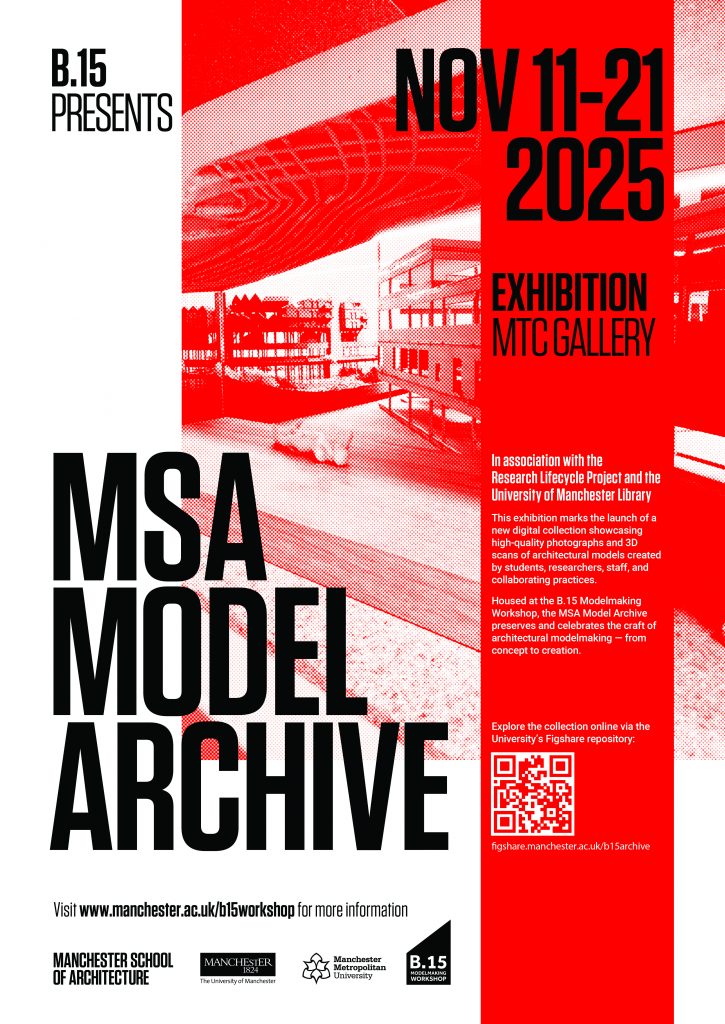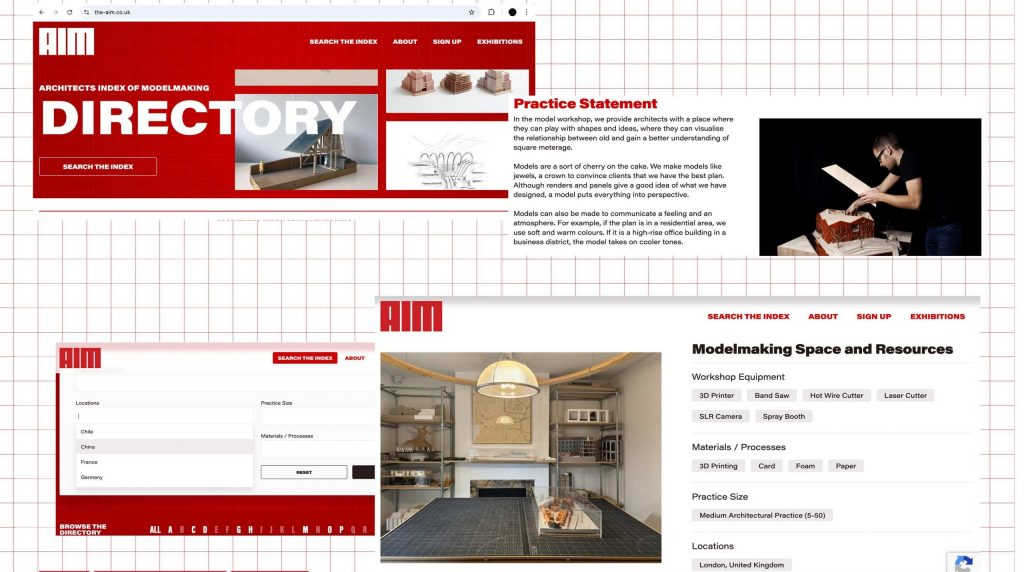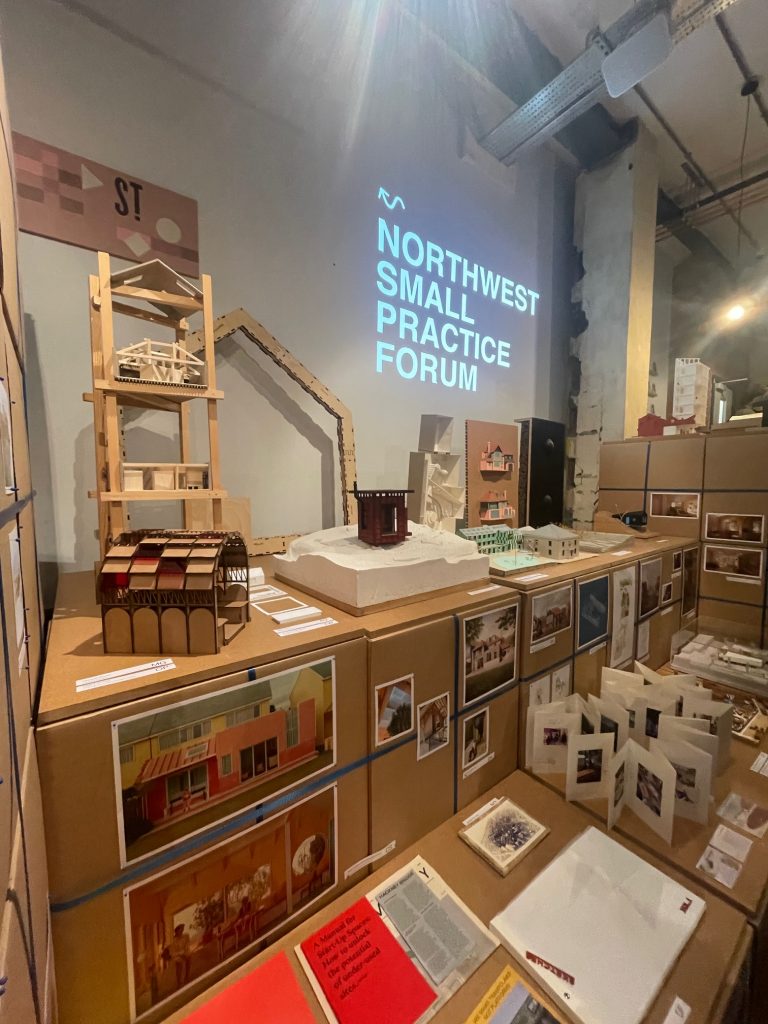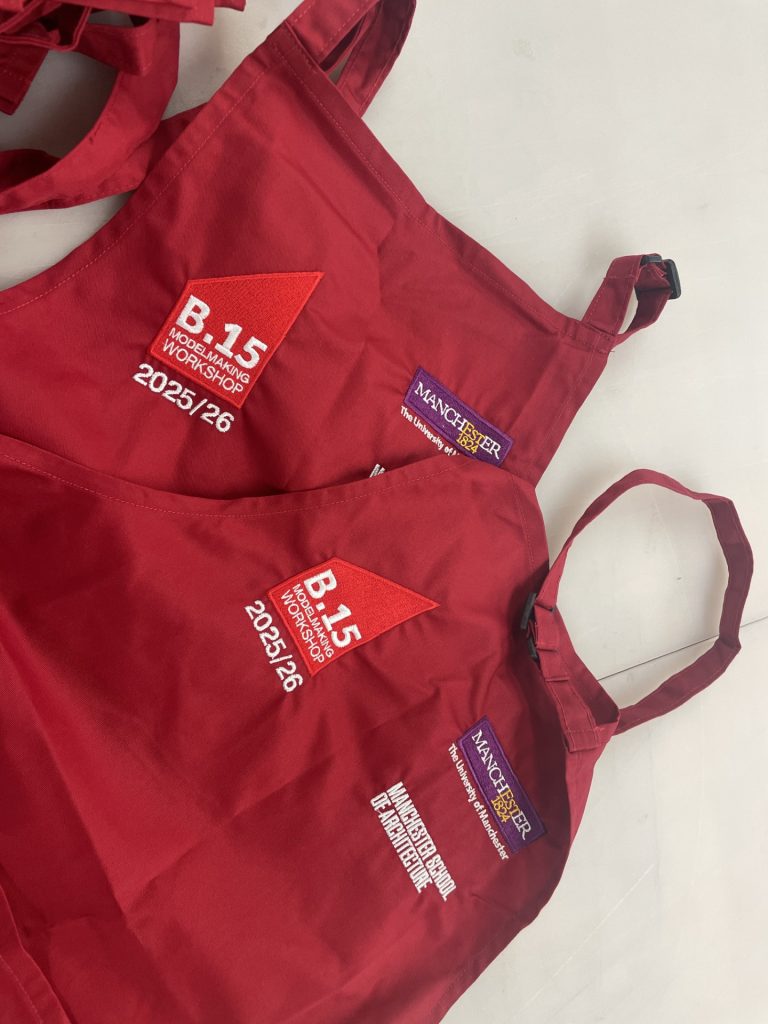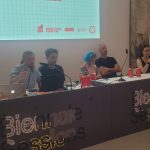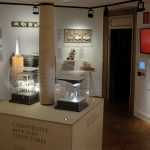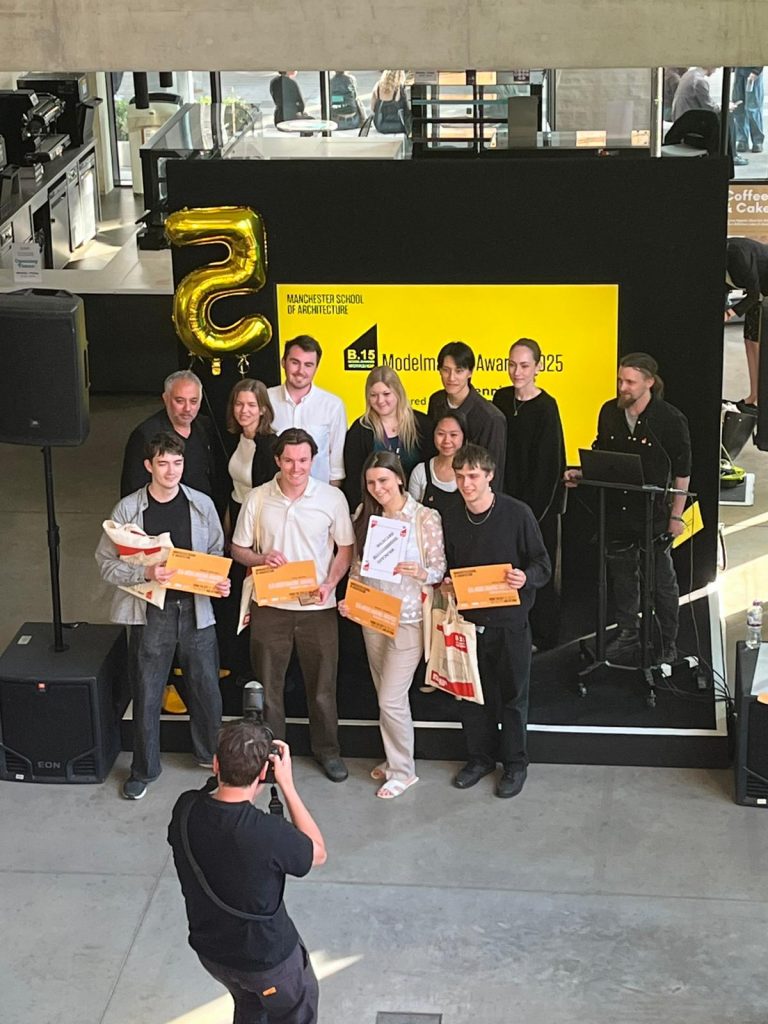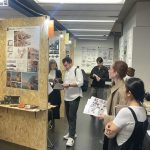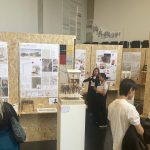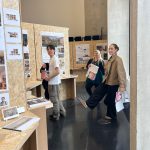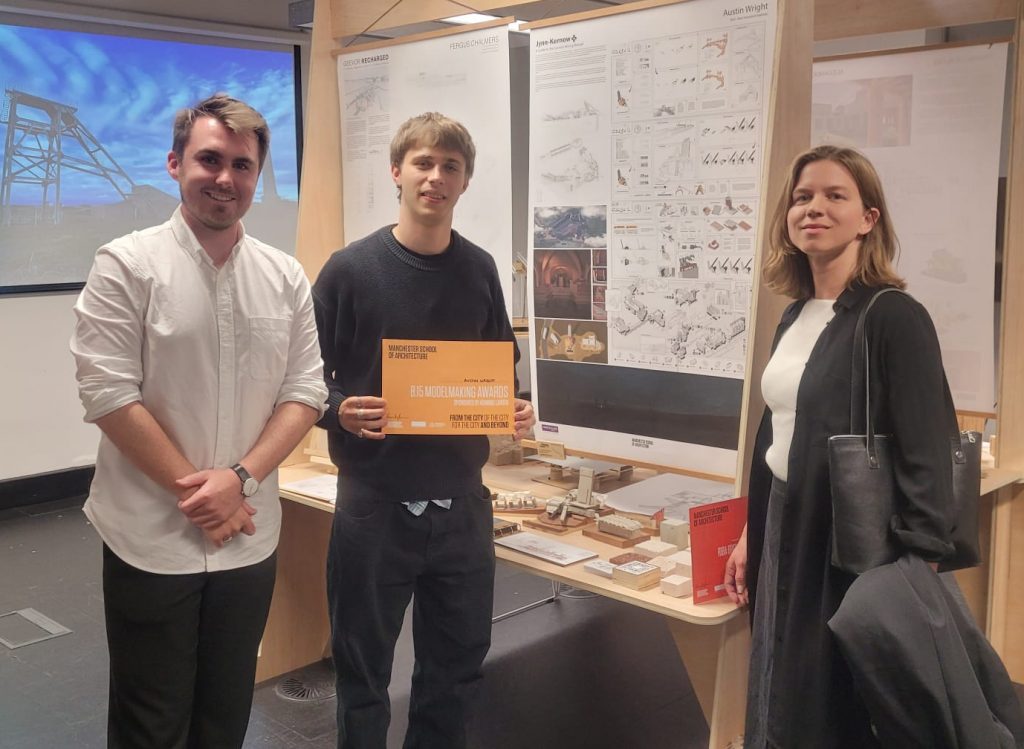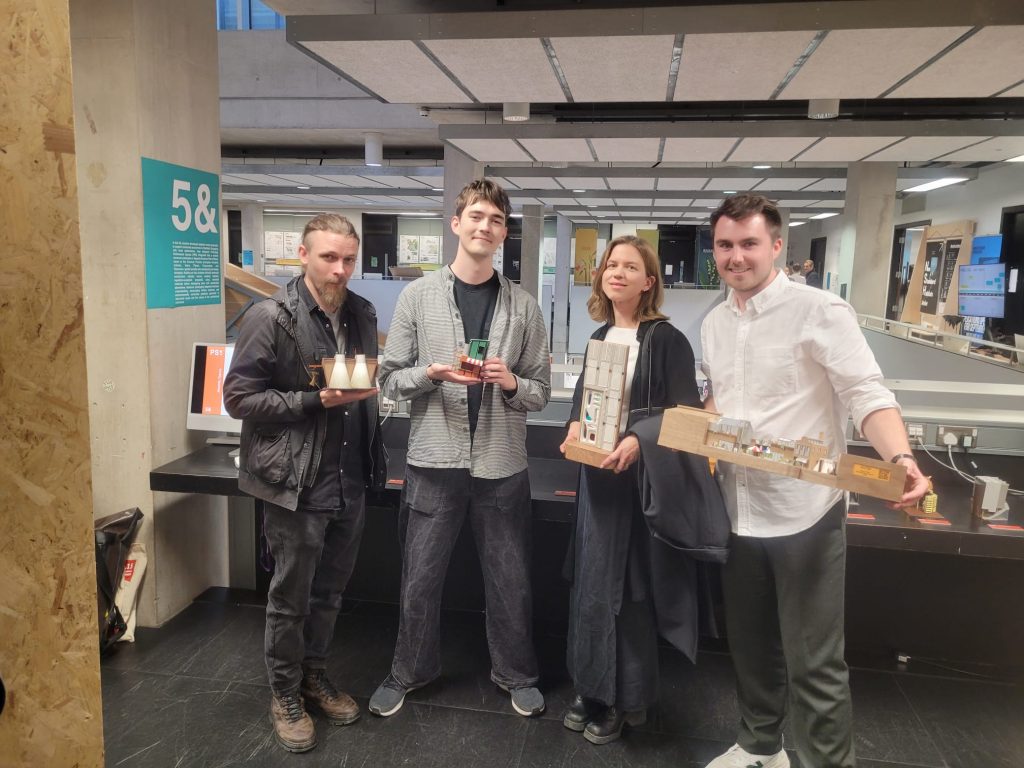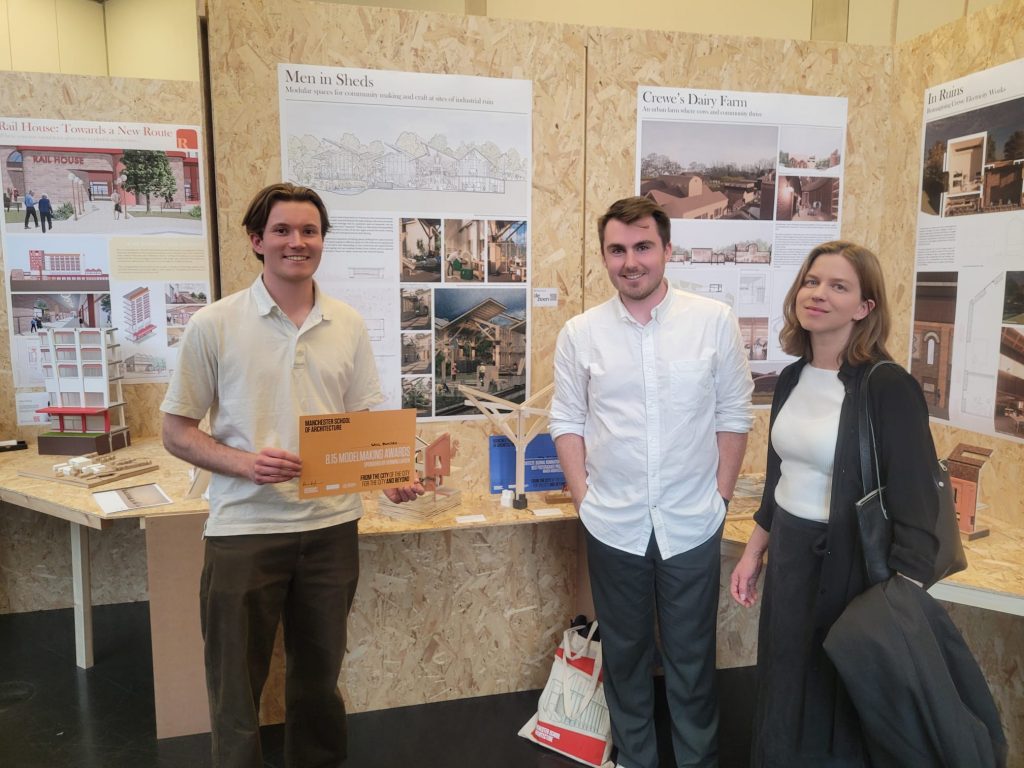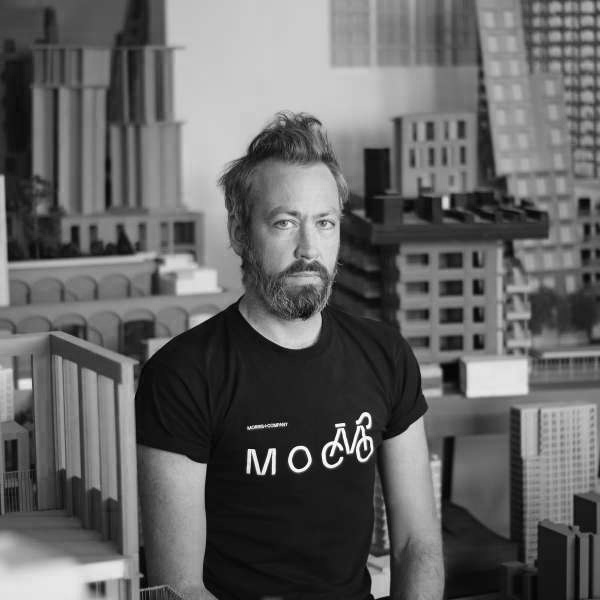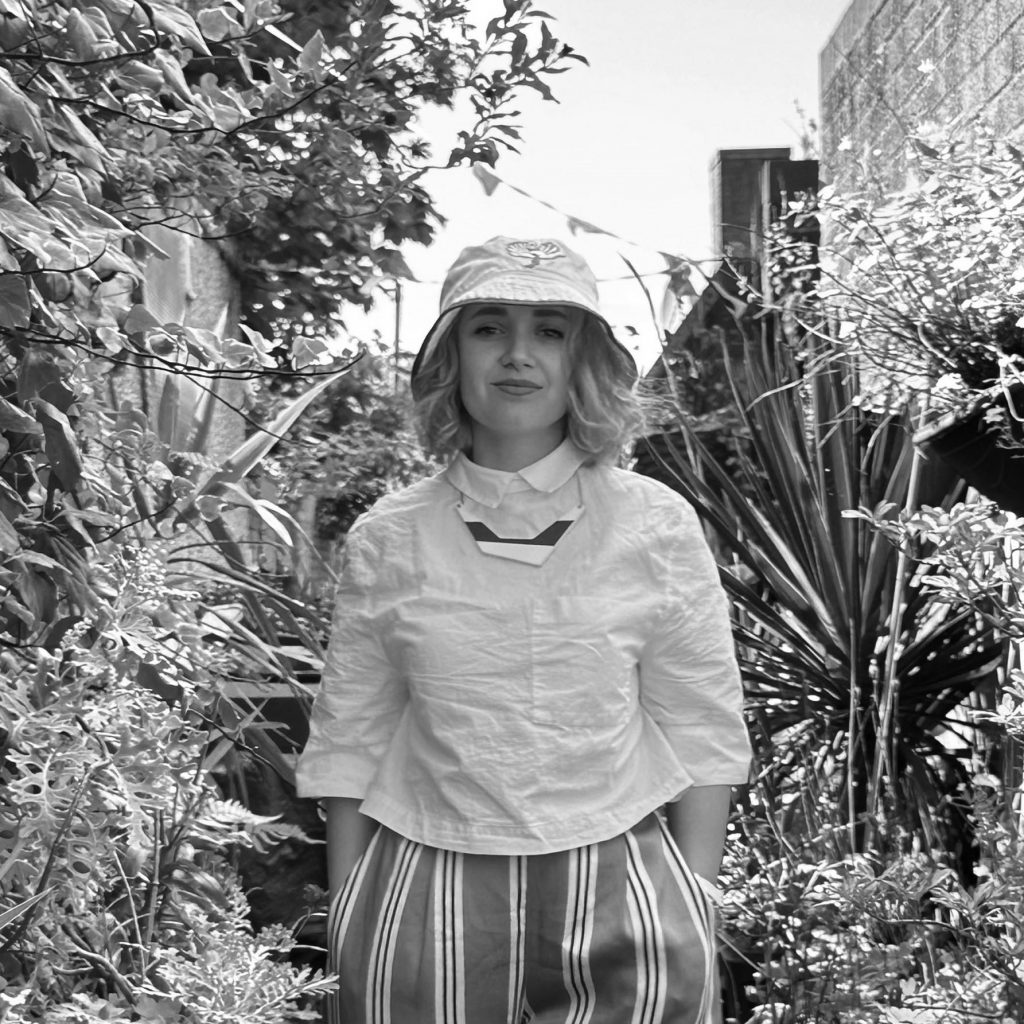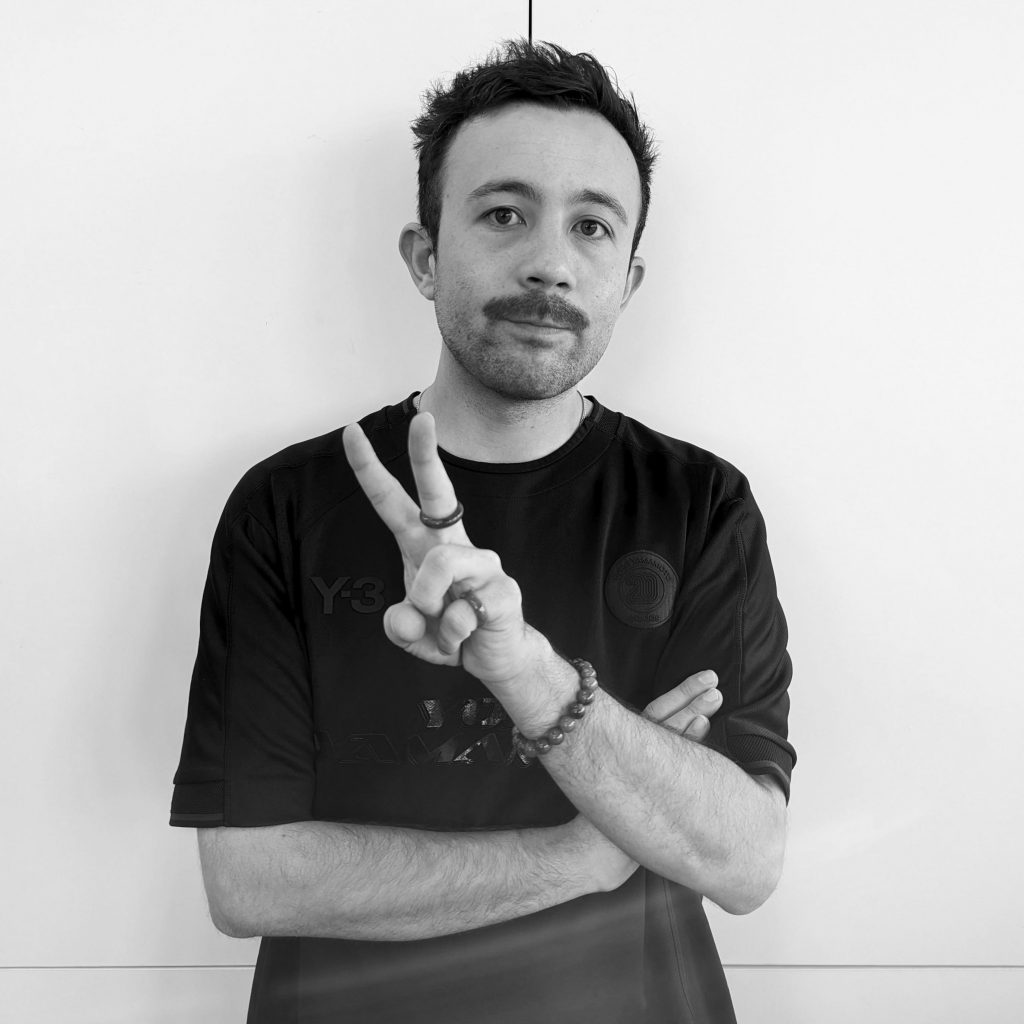Category Archives: Main News Feed
B.15 Winter break opening times
Hi All,
Hope you’re doing well.
Just a quick note to remind you that B.15 will be closed for the break following the Friday 12th December. We’ll be re-opening on Tuesday 6th January as normal.
Have a great break and we’ll see you on the other side!
– B.15 team
MSA Model Archive – Exhibition at MTC
Modern Architecture in Models: from the B.15 Archive
From the modernist:
Curated by Eamonn Canniffe and Scott Miller
These architectural models of individual examples from the modernist canon of the twentieth century were created by groups of students from the University of Manchester School of Architecture between 1991 and 1998 and are preserved in the archive of the B.15 Modelmaking Workshop.
They were created as coursework submissions for a third year undergraduate architectural history course to demonstrate the students’ understanding of the buildings which were used as case studies during Eamonn Canniffe’s lectures.
Their survival for over three decades is a testament to the modelmaking skills of the students and to the training and help they received in the B.15 Worksop.
at the modernist
58 Port Street, Manchester M1 2EQ
open 11am to 5pm, Tuesday to Saturday October 31st – December 24th 2025
Find out more here: https://the-modernist.org/blogs/news/modern-architecture-in-models-from-the-b-15-workshop-archive
Welcome to B.15 25/26 !
Hello and welcome to 25/26 at B.15!
Over the next few weeks we’ll be inducting new starters which will mean some irregular opening times. If you have any projects to discuss please get in touch and we’ll advise when is best to drop in.
Inductions
MA Architecture + Adaptive Reuse
The updated user guide can be found here for reference.
New Staff
Please welcome our newest team members, Jasmine Theobald and Zane Zeivate! Jasmine started with us in the last week before the summer degree show opening so some of you will have already met her. Zane has just started and will be working with us this year to cover Paulina who will be going on maternity leave. You can read more about their work here.
Inspiring things to look at!
The AiM project
Earlier this year we launched the Architects Index of Modelmaking. The AiM is an online source of practice inspiration for modelmaking and provides a growing list of practices who use models in the design work. Find out more at www.the-aim.co.uk and follow the AiM on Instagram @aimodelmaking
In support of the project we have an ongoing exhibition at the European Cultural Centre as part of this years Venice Biennale which runs until November 23rd. Back in June a panel of speakers discussed some of the themes around the project which provided insight and inspiration. You can watch the full event here.
NWSPF Scale Exhibition
The North West Small Practice Forum is a new initiative to bring together and celebrate the work of small architecture practices from the North west. The first event, SCALE, is an exhibition of works which include a great range of models and is well worth a visit. You can see the exhibition at SEESAW, 86 Princess Street, Manchester M1 6NG until October 15th.
New Aprons and Tote Bags
Finally, no new year would be complete without a fresh tote bag for our new starters. This time taking inspiration from the Nolli map style covering the oxford road corridor between B.15 and MTC. Free while stocks last!
And in a change to our extremely fashionable workshop aprons we have gone full red this year.
See you all soon!
B.15 Team
AiM Biennale Sessions: YOU ASK,THEY ANSWER! Panel event now online
On the 28th June 2025 we hosted the panel event AiM: YOU ASK, THEY ANSWER! at the Venice Biennale, Arsenale site. We’re pleased to share the full recording of the session here.
Thanks again to our panel, students, collegues and other guests who attended on the day!
– B.15 Team
August B.15 opening times
AiM Biennale Sessions: You Ask, They Answer! Event Videos
On June 28th we were joined by a group of MSA students from a mix of courses and year groups to put questions to a panel of guest speakers at La Biennale Di Venezia as part of Biennale Sessions 2025. The event took place alongside the Architects Index of Modelmaking Launch exhibition taking place at the European Cultural Centre’s Palazzo Bembo.
- Students gathering
- AiM Panel
- AiM Launch Exhibition
- Spanish Pavilion at the Giardini
- B.15 Team at Palazzo Bembo
Our panel consisted of four speakers who represent practices who have contributed to the AiM project.
Peter Lee – HENN
Ecaterina Stefanescu – Other Peoples Dreams
Joe Morris – Morris + Company
Simnia Ionescu – OMI Architects
Huge thanks to everyone who supported the project up to now and those who made the trip out to Venice to join the discussions.
Here’s a summary of the event along with the full event recording below:
Full AiM Biennale Sessions recording:
B.15 Modelmaking Awards 2025 sponsored by Henning Larsen – Winners!
Following judging of all shortlisted projects from Henning Larsen representative Patrick Handgrigan and Sofia Lundeholm 3 winners and 1 ‘wild-card’ winner was chosen. The judges were very impressed by the variety of work submitted and across the degree show making the process challenging as usual.
In response to the number of projects covered a last minute addition of the ‘wild -card’ was added going off judges response to seeing the work in person only. These was a clear winner for this as both judges were drawn to the work independently and without prompting.
Huge congratulations to everyone who took part and who joined us this year – your work is great and we look forward to seeing your future successes.
You can find the full long list of submissions here.
This years award winners were:
Austin Wright – BA3 Non Standard Habitats
Finley Hartless – MArch1 &Architecture
Saul Bunyan – MArch2 Continuity
Wild-card: Niamh Murphy – MLA2/SKN
Thank you to all of our students, Matt Ault for submissions collection and to Henning Larsen for their expertise and support with this years scheme.
B.15 Team
AiM Biennale Sessions Event: You Ask, They Answer! – June 28th
We’re pleased to announce this upcoming panel event in association with the AiM launch exhibition at this years Venice Biennale. Panel members who have contributed to the AiM project will respond to your questions on the subject of physical modelmaking in architecture.
At a time when we’re bombarded with news of artificial intelligence as the future in all walks of life, what does the production of physical models have to offer students and architectural professionals?
To get insight into your thoughts on this and anything relating to modelmaking in practice we are putting your questions to our panel in a recorded event that will take place on Saturday June 25th at 15.00-17.00 at the Venice Biennale Arsenale.
The event is open to all so if you happen to be in Venice do drop by and get in touch for more information. If you can’t make it the event will be recorded and we’ll answer as many of the submitted questions as possible.
WE NEED YOUR QUESTIONS!
We’re inviting questions from anyone, students, academics, professionals or anyone else with an interest. Ask the panel their views and we’ll discuss your topics live whilst being recorded for release here on our blog at a later date.
>>>>>>>>>Click here to submit your questions for the panel now!<<<<<<<<<<<
Meet the panel:
Simina Ionescu, Architect at OMI Architects, Manchester
Simina Ionescu is a qualified architect with over 11 years’ experience in the industry. After graduating from Manchester School of Architecture, she worked at several award-winning practices across Manchester before joining OMI Architects. Her experience ranges from heritage and conservation projects to new-build developments across the community, residential and commercial sectors. She is a strong advocate for model making as part of the design process and has helped implement the introduction of in-house rapid prototyping at the past three practices she has worked at.
OMI is one of the leading design-led architecture practices in the Northwest of England. The team of architects are all based in a RIBA Award-winning conversion of a Victorian baths, where they have created a number of studios for the creative industries. They are a multi-award-winning RIBA Chartered Practice and a certified B Corp. The practice is known for a broad range of work across all sectors, many of which are within sensitive historic settings.
Outside of OMI, Simina is a guest lecturer on the MA Adaptive Reuse course at the Manchester School of Architecture and plays an active role in the architectural community as the Treasurer of the Manchester Society of Architects.
Joe Morris, Founding Director of Morris+Company, London & Copenhagen
Joe is the Founding Director of Morris+Company and spearheads the practice across its two studios in London (63 people) and Copenhagen (7 people). In a career spanning over 25 years of professional practice, which has achieved widespread international recognition, Joe has increasingly advocated a sense of urgency for fair and transparent practice, inclusivity and equality, through open dialogue and critical debate. He is increasingly vocal on environmental and social and governance issues and is the driving force behind MoCo’s ongoing journey to BCORP accreditation.
Models at MoCo are more than mere representations; they are an immersive, tactile medium for reflection, innovation, and abstraction. As Joe describes, they are simultaneously “reflection, experiment, innovation, representation, abstraction, communication, question, answer, success, and failure.” This multifaceted role imbues them with immense physical and conceptual value, a body of thought that embodies the cultural essence of MoCo’s practice.
Joe has rich experience of different types of clients, across both the public and private sectors and is accustomed to working at a range of scales. He has lectured on the work of the practice in many leading UK universities, as well as in Barcelona, Bilbao, Buenos Aires, Copenhagen, Hamburg, Liege and Romania.
Ecaterina Stefanescu, Other Peoples Dreams, Preston
Ecaterina Stefanescu is a Romanian artist, designer, researcher, and academic. She holds a Master’s in Architecture from TU Delft and is currently based in Preston, UK, where she teaches architecture at the Grenfell-Baines Institute of Architecture, University of Central Lancashire. Her artistic and research practice centres on modelmaking, live-build, and drawing as tools for exploration, investigation, and co-design.
Through what she calls ethnographic modelmaking, Ecaterina uses models to reveal what is often ‘unseen’ in the fields of design and architecture: everyday life as experienced by everyday people. Her approach is participatory, situated, and co-produced. Whether created with machines such as laser cutter or crafted by hand on site with participants from recycled materials, the model becomes a tool for representation, analysis, cultural expression, and community engagement. Ecaterina is also co-founder of Estudio ESSE, a design practice with work across Europe.
Other People’s Dreams is a live-action research studio based at the University of Lancashire. OPD utilises active participation and co-production with marginal communities in the north-west to conceive and create architectural and spatial interventions. These projects allow local people to test new possibilities, activities and infrastructures within the places that they live, work and play, leading to greater agency, autonomy and empowerment.
Peter Lee, Associate at HENN, Berlin
Peter Lee is an associate in the design studio at HENN, where he has worked for the past eight years across the Berlin, Beijing, and Munich offices. Starting his career as a model-making intern, he now leads teams on early phase work such as competitions and feasibility studies, with a focus on science and research projects, as well as experience in commercial, educational and cultural work.
HENN is a third-generation architecture studio with over 70 years of experience, with offices in Berlin, Munich, Beijing and Shanghai. HENN has completed more than 150 projects and counts 400 team members from more than 40 nations. As a general planner, HENN works on projects involving architecture, urbanism and master planning across all project stages.
A passionate advocate for model making, Peter is especially interested in the role of the physical model as a design tool, and how it can complement digital or computational methods of practice. His expertise ranges from creating rough sketch models to high-quality presentation pieces for competition submissions, clients, and press events.
Alongside his work at HENN, Peter is an external lecturer at Berlin International University of Applied Sciences, where he runs design modules as part of the undergraduate architecture programme.
>>>>>>>>>Click here to submit your questions for the panel now!<<<<<<<<<<<

